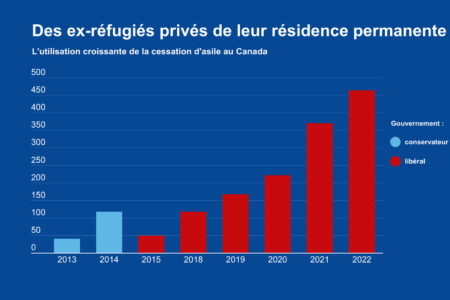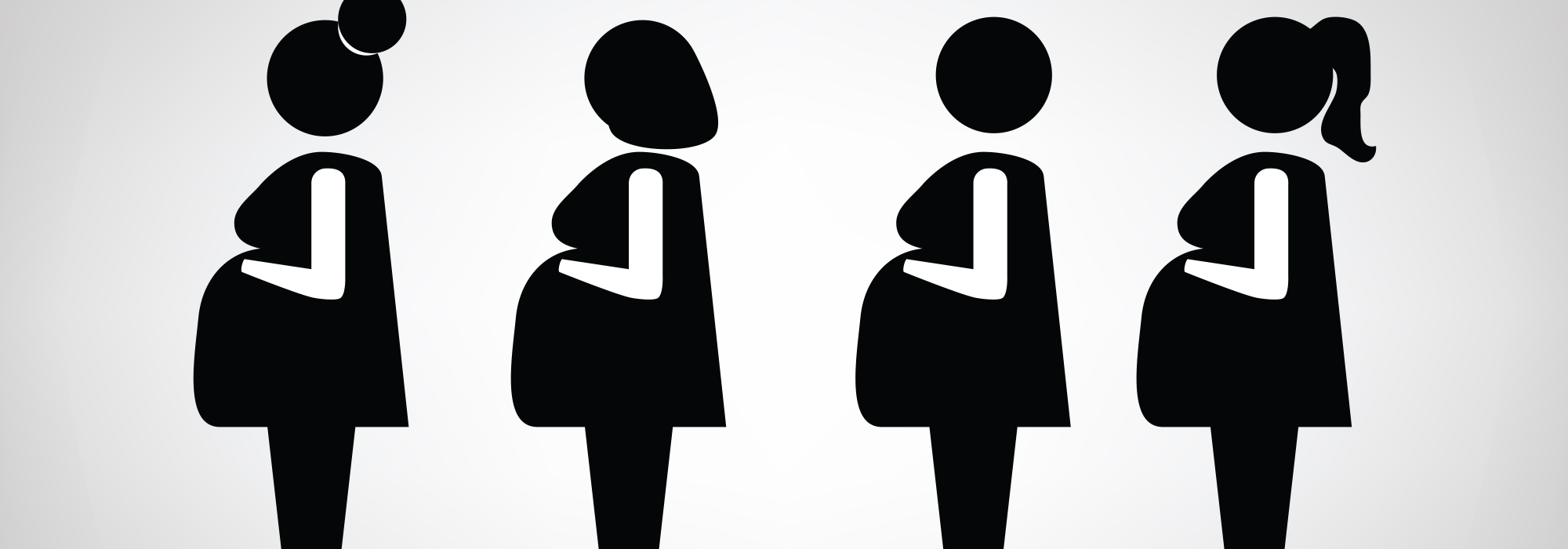
Could a single hospital in Richmond, BC, be the only one in the country experiencing a boom in birth tourism? This was the question many people had earlier this year, when politicians began taking notice of the unusually high number of nonresidents giving birth at the Richmond Hospital. I decided to take a close look at the available data from hospitals across the country. What I found is that the level of birth tourism nationally is at least five times greater than the 300 births captured by Statistics Canada in 2016. The impact of this practice can no longer be described as insignificant given its effect on the integrity of citizenship and public perceptions that birth tourism is a fraudulent shortcut to obtaining citizenship.
The term birth tourism or birth citizenship refers to nonresident women giving birth in a country in order to obtain its citizenship for their babies. The issue has come up recently in Canada, with a petition presented in Parliament by the Liberal MP for Richmond, Joe Peschisolido, and with Conservative Party members passing a resolution to withhold citizenship from any child whose parent is not Canadian or a permanent resident. In the United States, President Donald Trump has promised to stop birthright citizenship.
Earlier analysis (including mine) relied on Statistics Canada’s compilation of numbers from provincial vital statistics agencies, which count birth registrations, as shown in figure 1.
However, the numbers reported for the Richmond Hospital exceeded not only Statistics Canada’s overall numbers for British Columbia but its totals for Canada as a whole, raising serious doubts over the validity of the agency’s count. More representative numbers are available from the Discharge Abstract Database (DAD) of the Canadian Institute for Health Information (CIHI); it uses hospital financial data to code services provided to nonresidents (“other country resident self-pay”), which covers birth tourism. Refugee claimants and permanent residents who are within the three-month waiting period for coverage are coded separately. However, births to other temporary residents (such as corporate transferees and international students) and Canadian expatriates returning to give birth are also included in the data for nonresidents. This means that the DAD totals are slightly higher than for birth tourism alone.
Still, there is no doubt that birth tourism is increasing. Figure 2 shows the steady growth in the number of babies born in hospitals to women who are residents of other countries, by absolute numbers and percentage for all provinces except Quebec. Figure 3 breaks the numbers out by province. (Although Quebec’s hospital financial codes are generally comparable to those used in the rest of Canada, Quebec’s Ministère de la Santé et des Services sociaux refused to authorize release of comparable data because of concerns regarding possible coding errors.) These births total just over 1 percent of all live births in English Canada.
According to CIHI DAD, the 25 hospitals with the highest numbers of nonresident births account for about 75 percent of all nonresident births outside Quebec (21 in Ontario, 2 in British Columbia, and 1 each in Alberta and Nova Scotia). Six Montreal-area hospitals have comparable numbers. I collected data from Montreal-area hospitals independently, as they were not included in the CIHI database.
Figure 4 takes a detailed look at the top 10 hospitals for nonresident births (accounting for about 50 percent of all nonresident births). The recent growth in nonresident births for most is dramatic. While the Richmond Hospital stands out, there are four hospitals where nonresident births are close to 10 percent of total births.
Hospital financial data, while imperfect, give a better sense of the numbers and trends than other available data. The likely explanation for the discrepancy between hospital financial data and vital statistics agency data is that birth tourists use their real addresses for hospital payments but their temporary Canadian addresses on birth registration forms.
With better data, birth tourism is revealed as more prevalent than previously assumed. Overall the level is still low compared with the total number of live births in English Canada (292,521 in 2017) or the number of new citizens (106,228 in 2017), but the numbers are no longer insignificant and are increasing.
The question now becomes what appropriate and proportionate options the government should consider. The previous Conservative government was prepared to take action to crack down on birth tourism, but it abandoned the promise when it became clear that the small numbers involved did not merit the costly, operationally complex solutions that would have to be implemented.
Are legislative changes to the Citizenship Act and the Immigration and Refugee Protection Act warranted today, or would a variety of nonlegislative approaches be more cost effective in reducing birth tourism? Although citizenship is a federal responsibility, the following three options have implications for both the federal and provincial governments.
Making birth tourism grounds for visitor visa refusal
Currently, visitor visa applications cannot be refused on grounds of birth tourism. There is nothing in the Immigration and Refugee Protection Act that would bar a woman from getting a temporary resident visa solely on the basis of her intent to give birth in Canada. A change could be made to section 22 of the Act, “Temporary Residents.”
The questions on the visitor visa form could include one about intent to give birth. Discretion could be granted to visa officers to request a pregnancy test in cases deemed to be high risk.
Any woman intending to give birth who has not declared this as the purpose of her visit, or who has not declared her pregnancy as a condition requiring medical services, would be guilty of fraud and misrepresentation in her visa application. Substantively, the citizenship of her child would be fraudulently obtained through the immigration fraud of the mother.
This approach might result in a decline in the number of birth tourists through the signal that it would send. But it would still be possible for a visitor to misrepresent her intent, and enforcement, given the short stay of birth tourists, would be virtually impossible.
Qualified birthright citizenship
Australia adopted a qualified birthright approach in its 2007 citizenship act. From a legislative perspective, this would require a relatively simple change to our Citizenship Act, specifying that a person born in Canada is a Canadian citizen if and only if the parent is either a Canadian citizen or a permanent resident and if the child has lived in Canada for 10 years after birth.
However, implementation of any legislative change would require revision of provincial birth registration procedures, to distinguish between children entitled to citizenship and those not, with significant operational and financial costs. In particular, registering a birth would require parental photo identification and proof of residency, which is currently not required. These data would need to be captured in the provincial vital statistics databases.
Nonlegislative regulatory and financial approaches
Most birth tourism occurs in a relatively small number of hospitals, so regulatory approaches may be a more proportionate and cost-effective approach. They could include taking financial action against nonresidents who give birth in Canada.
While financial measures do not address objections to birth tourism in principle, they could discourage some birth tourism and would address the cases where birth tourists are not paying their hospital bills. Possible measures include regulations prohibiting “birth hotels” and related consultant and other services; substantial increases in the financial deposits that hospitals require of nonresidents; requiring women whose pregnancy is advanced to have travel insurance that covers delivery costs; and having vital statistics agencies require proof of payment for hospital services before issuing birth certificates for children of nonresident mothers.
As a country that is based on immigration and depends upon it, Canada has always intended birthright citizenship to be for those who want to live here. Birth tourism, with its nonexistent to minimal connection to Canada, debases the meaningfulness of citizenship.
Moreover, some communities have legitimate concerns that birth tourists are crowding out local residents at hospitals. Nonresidents are over 20 percent of women giving birth at the Richmond Hospital.
While citizenship is a federal responsibility, the role of provincial vital statistics agencies is key, both with respect to securing more accurate data and in deploying potential solutions. Policy-makers and legislatures need to seize the opportunity provided by Peschisolido’s petition not only to “determine the full extent” but also to “expeditiously implement concrete measures to reduce and eliminate” this practice. The three approaches above provide options for governments to consider in a measured and proportionate manner.
Photo: Shutterstock/ By Kerly Chonglor
Do you have something to say about the article you just read? Be part of the Policy Options discussion, and send in your own submission. Here is a link on how to do it. | Souhaitez-vous réagir à cet article ? Joignez-vous aux débats d’Options politiques et soumettez-nous votre texte en suivant ces directives.








